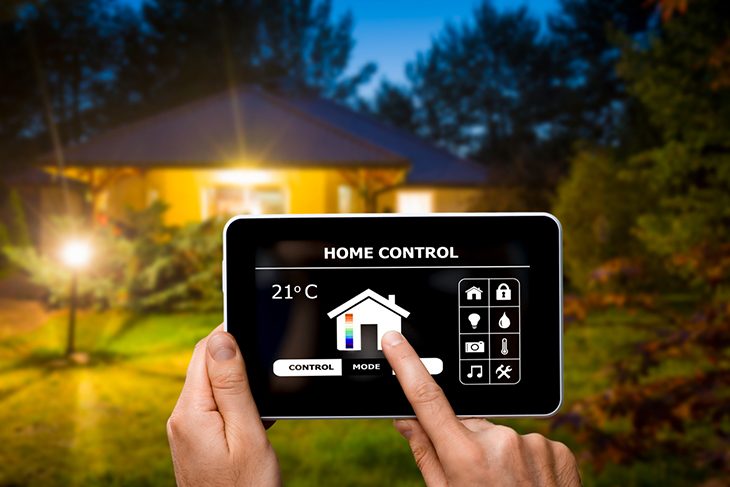When Controls Don’t Communicate
Knowing the ins and outs of how controls work can help you fill in the communication gap.

When you look at the heating controls market today, things aren’t as simple as they were 10 years ago, let alone 50. Electronic controls are changing rapidly and at an ever-increasing pace. They have many different tasks to perform — safety, comfort, efficiency, etc. As a general rule, they make our life better, but they can cause some frustration to the installer and service tech when things don’t work properly.
If you are in the hydronics industry, you are aware of the fact that we often have multiple controls that we must tie together to make the heating system function as intended. That can be a challenge. Some controls, it seems, have about the same level of communication with each other as Clint Eastwood did in “The Good, The Bad and The Ugly.”
It seems the HVAC industry has done a much better job of getting all its system controls in one user-friendly package. But then again, HVAC systems often don't have the flexibility and comfort control that is common in hydronic systems.
Control wiring is an essential skill that every hydronic technician and installer must learn, with one of the first lessons being how to read and follow an electrical diagram. And the second thing you must learn is that following the diagram won’t always achieve your goal. The manufacturers simply can’t post a diagram for every possible scenario, so they pick the most common ones. That is why it is important to learn what the control actually does. You have to understand what all the inputs and outputs are, and what triggers them. Once you understand all the I/Os and logic in the controls, wiring your hydronic system will become infinitely easier, and you may find that you can use fewer controls to get the job done, or offer the customers a higher level of efficiency and comfort with the controls you have been using.
One thing is very important though; I can’t stress this enough. When you are using multiple controls that send high voltage signals back and forth, it is essential that you use a single source power supply. Otherwise you risk getting the electrical phases crossed and creating an electrical short.
It is also good practice to document your control wiring. It is not hard to draw an electrical diagram and jot down the system’s control sequence. The diagram should be left at the jobsite with the boiler manuals. This will allow the next service technician to quickly and easily troubleshoot a system. If that next technician is you, you’ll thank yourself for taking that extra step. If you have done some complex control wiring, you’ll know that it is almost impossible to remember it after a year has passed.
The boiler project
Over this last winter we replaced an oil boiler for a customer. The boiler was in the basement of a classic two-story colonial home. The house sat a few hundred feet back from the road. Leading up to the attached garage was a blacktop driveway bordered on both sides by a well-manicured front lawn.
On a typical boiler replacement, I like to take the opportunity to update the rest of the hydronic components as well. Circulators, zone valves, expansion tanks and the like; the normal stuff you find hanging around in boiler rooms. It is also the right time to make corrections to the boiler piping where needed.
It was not to be on this system though. In the homeowner’s mind, everything worked except the boiler, and that was the only thing he was paying to have replaced! And there is no denying the fact that he was right. While it isn’t typically the best long-term financial strategy to do it that way, it was his decision, and rightfully so. I did manage to convince him, however, that a new switching relay was needed along with the new boiler.
The old boiler was laid out in the typical fashion for the time period. It had four zone pumps on the return header along with the fifth pump, which served the indirect DHW heater. On the supply I found a Taco air scoop with a depleted expansion tank dangling underneath. Exactly the right height to hit your head on every time you aren’t paying attention. People!
It was hard for me to not switch the system over to a single circulator on the supply, pumping away from the point of no pressure change, zoning the system with zone valves and replacing the air scoop with a microbubble air separator. But as I said before, the man writing the check had spoken, and it wasn’t happening.
 The new oil boiler was a National brand, Eagle series. The heat exchanger is cast at the Peerless foundry, not far from where I live. The boiler trim includes a Becket burner and a Hydrostat control. It’s a decent little no-frills, economy boiler. For the switching relay, I used a Taco SR506-EXP-4.
The new oil boiler was a National brand, Eagle series. The heat exchanger is cast at the Peerless foundry, not far from where I live. The boiler trim includes a Becket burner and a Hydrostat control. It’s a decent little no-frills, economy boiler. For the switching relay, I used a Taco SR506-EXP-4.
The install went smoothly. My helper began with labeling all the thermostat wires and the corresponding zone pumps before disconnecting and removing the electrical components. Meanwhile, I was disconnecting the supply and return piping and getting prepped for the new boiler. Then came the hard part. Lugging an 800-pound cast iron relic up out of the basement, and bringing down the 400-pound replacement. I always breathe a sigh of relief after that part is done. We never had one get away and sure hope it never happens.
With the new boiler sitting in place, it only took a few megapress fittings and a few short sections of pipe to make the piping connections. I continued to trim out the boiler, mount the burner, and install the venting while my helper installed the new switching relay and reconnected the pump leads and thermostat wires.
Then came the fun part — connecting the SR506-EXP to the Hydrostat 3250-Plus. Both of those controls come with unique fuel saving features that are not available in the basic models. I wanted to take advantage of all of them, or as many as I could. Among the standard features such as priority zone (for DHW) and primary pump operation, the SR506-EXP also comes with pump exercise, priority zone post purge, low limit operation and priority protection operation.
The Hydrostat also comes with various cool features, which include a boiler reset, thermal prepurge, low water cutoff, DHW ready and circulator holdoff (enhanced condensing protection.)
This is all good stuff, however, neither the SR506-EXP wiring diagram nor the Hydrostat’s wiring diagram, give you access to all the features in both controls. Following the Hydrostat wiring diagram gives you the most options (See Pic A). It does, however, leave out two important features — the circulator holdoff (enhanced condensing protection) in the Hydrostat, and priority zone post purge (DWH) in the SR506-EXP.
In order for the circulator holdoff function to work, the Hydrostat has to be able to control the power going to the circulators through the C1 terminal. In this diagram, the SR506-EXP has full command of the circulators. This function is critical for the longevity of a cast iron boiler connected to a high mass system. It holds off the pump until the boiler reaches 125 F, at which point the pump will stay on for the duration of the call, unless the boiler temp drops back to 115 F.
The post purge in the SR506-EXP doesn’t work correctly either when using the diagram in Pic A. The Hydrostat is receiving its DHW call from the hot leg of the priority zone pump terminal on the SR506-EXP, to the ZR terminal in the Hydrostat. As long as there is power to that pump, the boiler will continue to fire to high limit, thinking that there is an active call for DHW even if the SR506-EXP is already in post purge. This may cause the DHW to overshoot setpoint, or at the very least leave a lot of heat energy in the boiler to be slowly wasted up the stack (See Pic A).
Being the type of person I am, I can never leave well enough alone. So, after some studying, I came up with an alternate wiring technique that allows all the functions of both controls. It should be noted that this diagram is not endorsed by any manufacturer.
To enable the circulator holdoff function, a wire is required between C1 on the Hydrostat and ZC on the SR506-EXP.
The priority zone post purge (DHW) is achieved by isolating the ZR input on the Hydrostat, with a normally open 24V relay that is activated from the priority end switch on the SR506-EXP. Since these are dry contacts, an external transformer is included to power the relay. 120V uninterrupted power should be supplied to the common terminal of the relay contacts.
On a call for DHW, the priority contacts in the SR506-EXP will close, energizing the relay. This will send the signal for DHW to the ZR terminal on the Hydrostat. When the DHW call is dropped, the reverse happens, however, the priority pump will continue to run for the duration of the post purge.
The heat is already paid for, why not use it.
The following settings have to be made in each control for this diagram to work properly:
SR506-EXP dip switch settings
- • POST PURGE ON
- • PRIORITY PROTECTION ON
- • LOW LIMIT (ZC) ON
Hydrostat
- The Zone Indirect dipswitch must be set to the I position.
- Low Limit, Off
- Thermal Prepurge, On
- Circulator Activation Options, Setting C (circulator on both TT & ZC/ZR calls)
There are other settings in both controls that can be set to user preference. These are the only ones essential to the operation of the diagram in Pic B.






